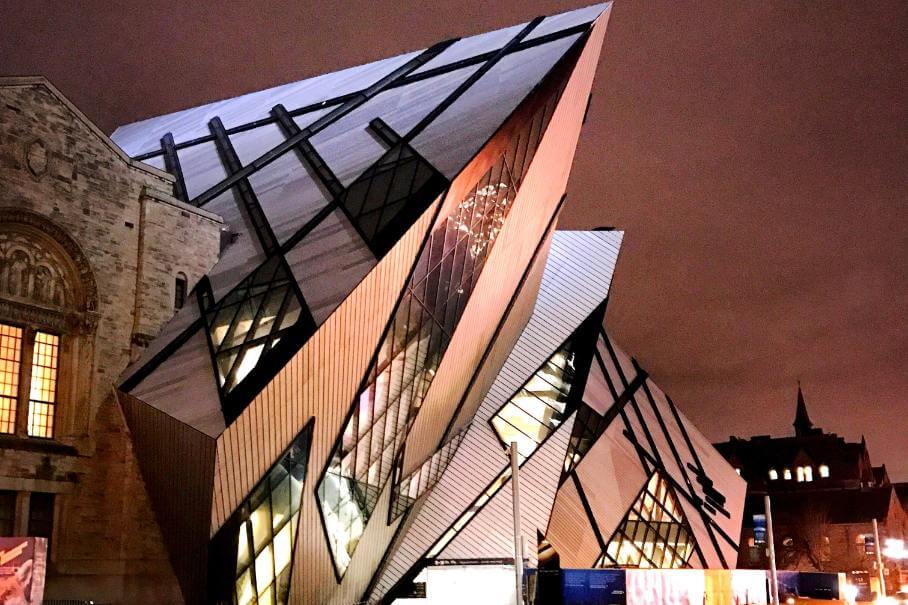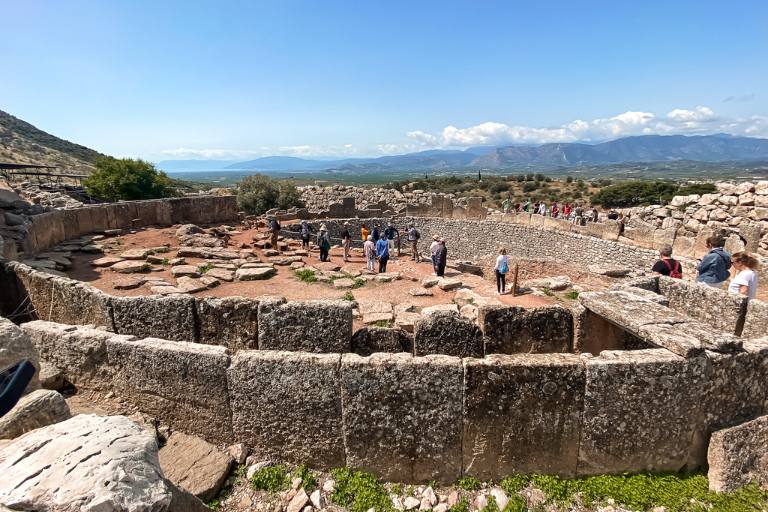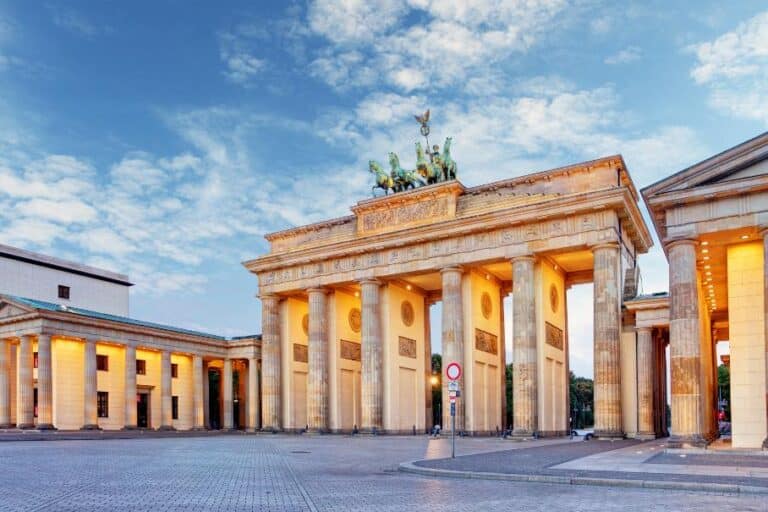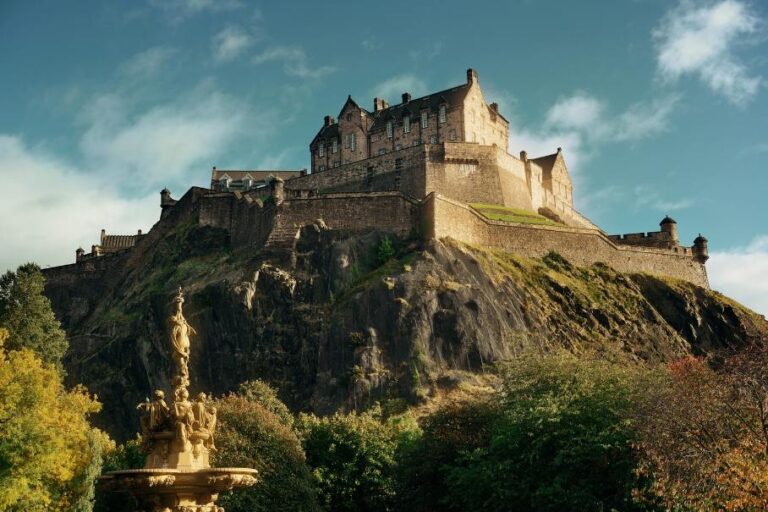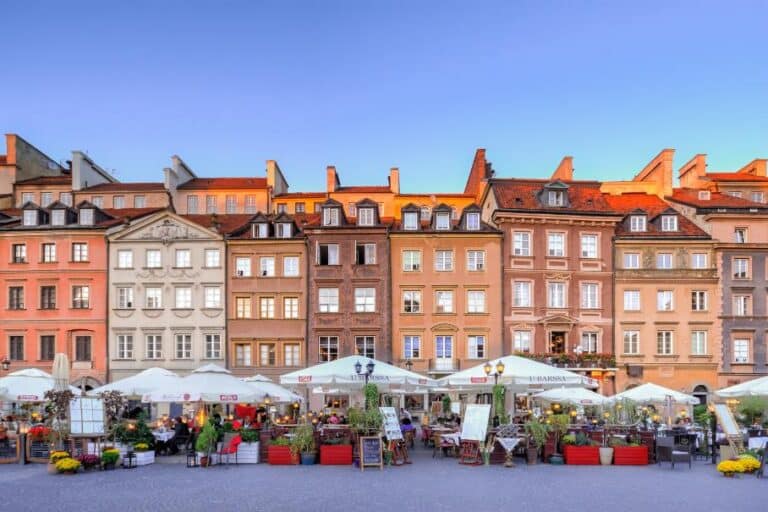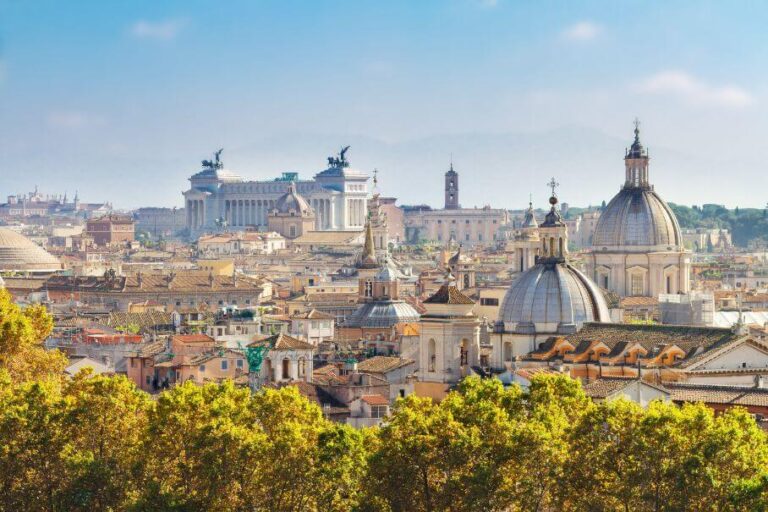ROM: Toronto’s Royal Ontario Museum You Have to See
It’s not a secret that I love museums and try to visit them when I travel. Luckily, there is also a fantastic museum in Toronto that I often visited when I lived there. The Royal Ontario Museum, known as the ROM, is spectacular. It has everything that makes visiting museums an adventure, from dinosaur bones to ancient sculptures, fancy decor once owned by royals and everything in between.
Toronto has many great museums, but I always recommend visiting the ROM. It’s a great place for kids and adults to learn and explore. There are often special exhibitions, like the spider exhibit I took my niece to or a pearl exhibition, that add to the experience. Here is what you need to know when planning your trip to the Royal Ontario Museum.
About the Royal Ontario Museum
The Royal Ontario Museum (ROM) stands as one of Canada’s largest museums and houses over six million items. It ranks among the largest in North America, with an extensive collection that spans world cultures, nature, and art from across the globe and throughout history.
The ROM also serves as Canada’s largest field-research institution, with experts studying everything from ancient civilizations to modern ecosystems. You can explore special exhibitions and many permanent collections, including dinosaur fossils, South Asian art, ancient Egyptian treasures, gems and minerals, wildlife, and much more.
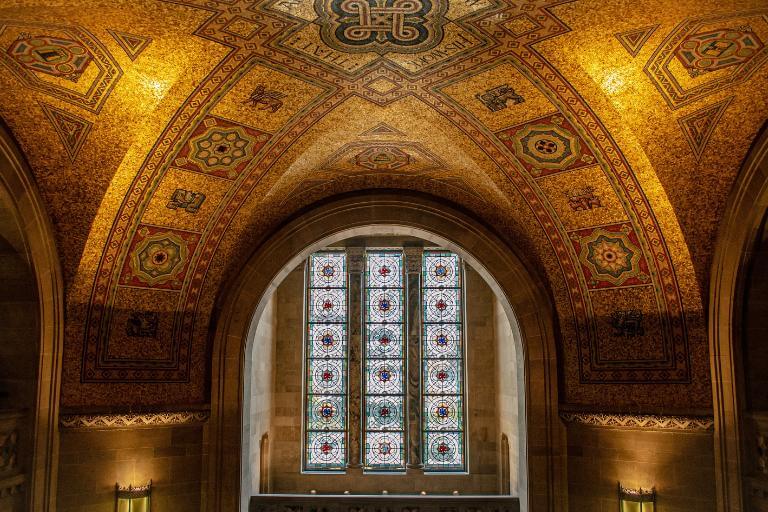
The ROM’s permanent collection includes more than 13,000 works of art and over one million natural history specimens from around the world, including South America, Asia and Africa. It’s home to Canada’s largest collection of cultural objects from ancient civilizations spanning thousands of years.
History of the Royal Ontario Museum
Several people with wealth and influence championed the idea of a museum in Toronto. They had enough power behind them to influence the Ontario Legislature to create the ROM Act in 1912, marking the official beginning of the museum.
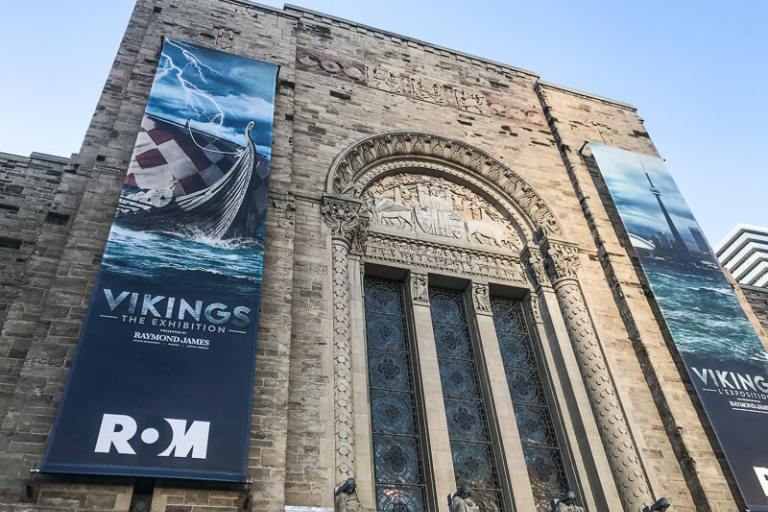
The ROM opened to the public with much fanfare in 1914. The original ROM building featured a distinctive Romanesque Revival style that you can still see parts of today. Initially, the province and the University of Toronto jointly governed the museum, with many early specimens coming from the university’s collection.
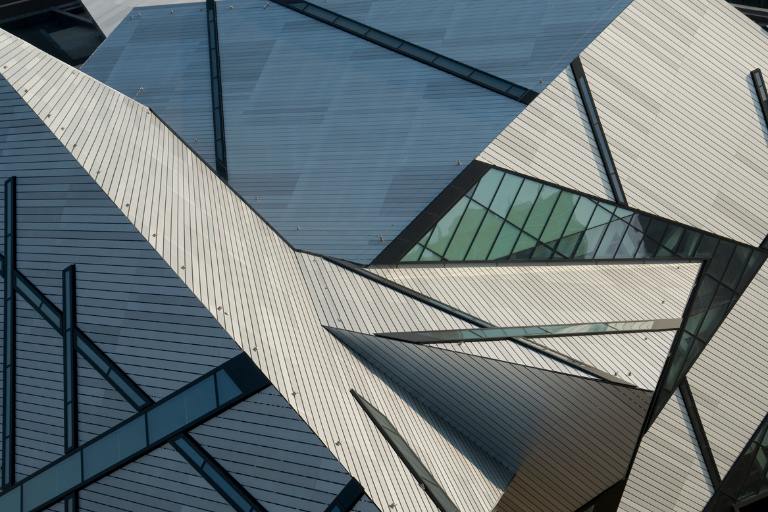
The museum started as five independent museums known as the Royal Ontario Museums of Archaeology, Paleontology, Mineralogy, Zoology and Geology. In 1968, they merged under the direct control of the province, becoming the unified Royal Ontario Museum we know today.
Where is the ROM?
The ROM sits at the corner of Bloor Street West and Queen’s Park in downtown Toronto. In its early days, this location marked the edge of Toronto’s developed area. Today, it’s a bustling urban center that connects to the University of Toronto campus.
The Museum subway station sits right outside the ROM, making it easy to reach by public transit. It’s my favourite station since it’s designed to look like an exhibit. When I attended school here, I often got off at this stop. The area also sits near Yorkville, an upscale Toronto neighbourhood where you might spot celebrities, especially during the Toronto International Film Festival (TIFF).
The ROM borders the Philosopher’s Walk on its west side. This scenic path winds through the campus and once flowed as a natural waterway. From certain spots near the museum, you can catch glimpses of the Toronto Islands across Lake Ontario on clear days.
The Crystal and the main entrance
The museum has undergone several expansions over the years. The most striking and controversial change came in 2007 with the addition of the Michael Lee-Chin Crystal. It caused quite a stir when it was first unveiled.
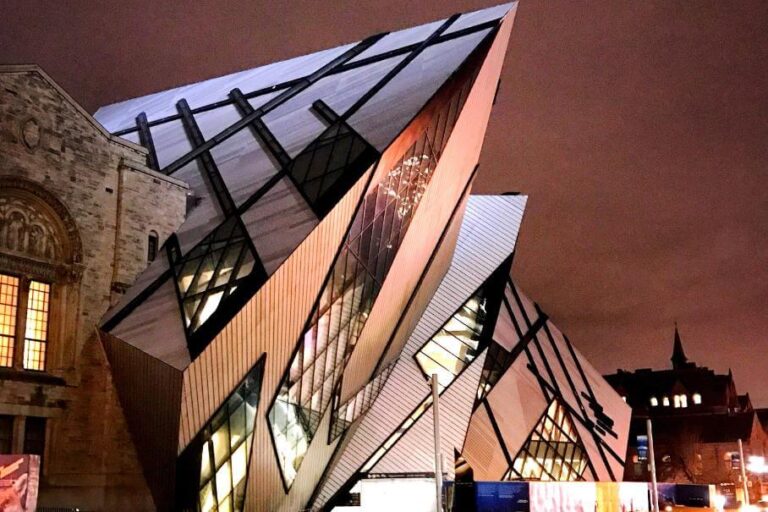
Michael Lee-Chin donated $30 million to the ROM, earning the naming rights to this bold extension. Architect Daniel Libeskind designed the structure, first sketching it on a napkin. The design plays off the crystal displays within the museum and creates a striking contrast with the historic building. Think of the glass pyramid in the Louvre’s courtyard as a comparison.
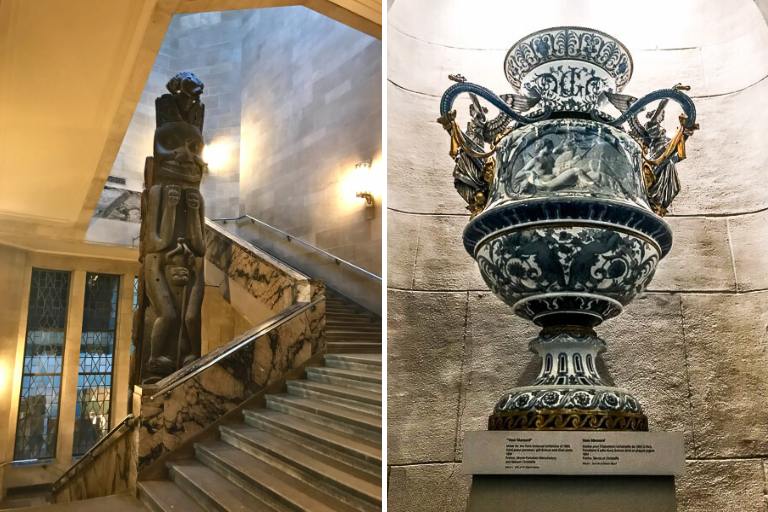
The Crystal houses the main entrance to the museum on Bloor Street, welcoming visitors through its dramatic angular doorway. When first completed, public opinion split sharply—some loved it while others found it jarring. I must admit I didn’t love it initially, but it grew on me over time.
ROM exhibitions and collections
The ROM offers over 40 exhibition spaces spread across multiple levels. These spaces showcase items from the ROM collection of over six million objects. Let me take you through some of the must-see exhibits.
Louise Temerty Galleries of the Age of Dinosaurs
In the museum’s grand lobby, you’ll find a massive dinosaur skeleton that greets visitors. This spectacular display is just the beginning of what you’ll find in the Louise Temerty Galleries of the Age of Dinosaurs. The collection includes hundreds of dinosaur bones and fossils from land, sea and air creatures.
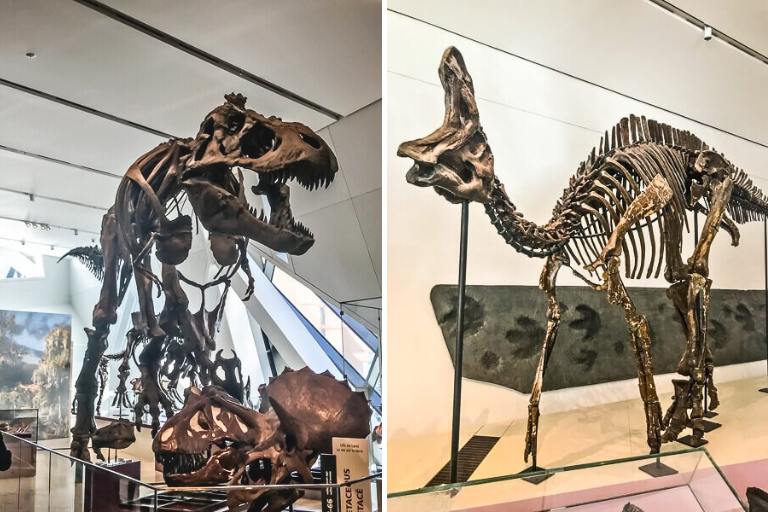
The dinosaur fossils here rank among the most important in North America. When I took my five-year-old niece to this section, she got so excited and even knew many of the dinosaurs by name. Even though all kids seem to love dinosaurs, it’s also a great exhibit for adults. I think we can appreciate the size of these creatures a lot more, plus it’s always amazing to realize just how old they are.
The Bat Cave
One of the ROM’s most unique and popular exhibits is the Bat Cave. This life-sized recreation of Jamaica’s St. Clair Cave puts you right into a dark, humid cave environment complete with realistic bat models. The immersive exhibit features over 800 model bats and even includes bat sounds and smells for a truly authentic experience. Kids especially love this exhibit, which teaches about bat ecology and conservation.
Ancient Egypt and Nubia
The allure of ancient Egypt fascinates me—mysterious, exotic, and full of history, I didn’t study enough in school. The ROM houses a stunning collection of Egyptian mummies and artifacts that span thousands of years. For me, anything from ancient Egypt is a huge draw. While you can see mummies and sarcophagi in many museums around the world, it’s always great to see them close to home.
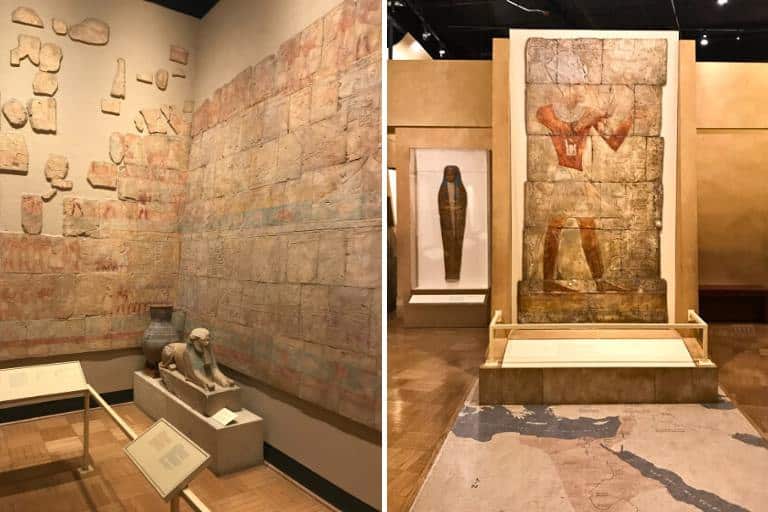
World Cultures Galleries
The ROM’s world cultures galleries span civilizations across the world. From ancient Rome to Indigenous cultures of the Americas, these exhibits showcase human creativity and innovation through time. The ROM houses one of the most diverse collections of cultural artifacts outside their countries of origin. They are a great way to learn about distant lands and forgotten cultures.
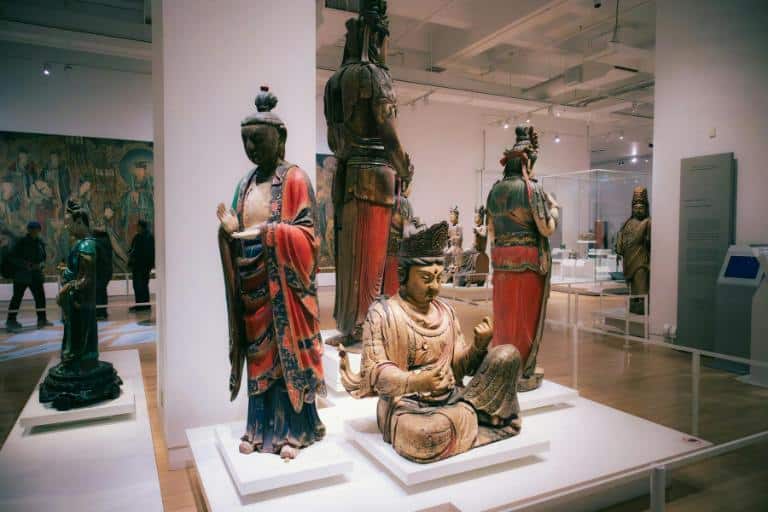
Don’t miss the collection of Chinese temple art and artifacts in the Joey and Toby Tenenbaum Gallery of China. This collection ranks among the top 10 in the world outside of China, spanning nearly 10,000 years of Chinese history. It’s pretty impressive and definitely worth seeing.
Patricia Harris Gallery of Textiles & Costume
It’s always fascinating to see historical fashion. The ROM’s textile collection showcases 3,000 years of design evolution, manufacturing techniques, and cultural significance. The exhibit rotates items from its collection of 50,000 textiles due to their fragility. Each visit offers something new among the roughly 200 pieces on display. I am never tired of discovering these historical treasures.
Earth and Space Galleries
The ROM’s natural history sections feature impressive displays of minerals, meteorites and prehistoric life. The Burgess Shale fossil collection preserves some of Earth’s oldest complex life forms from 505 million years ago. These rare fossils offer a window into early evolution and are a great way to actually look into the past.
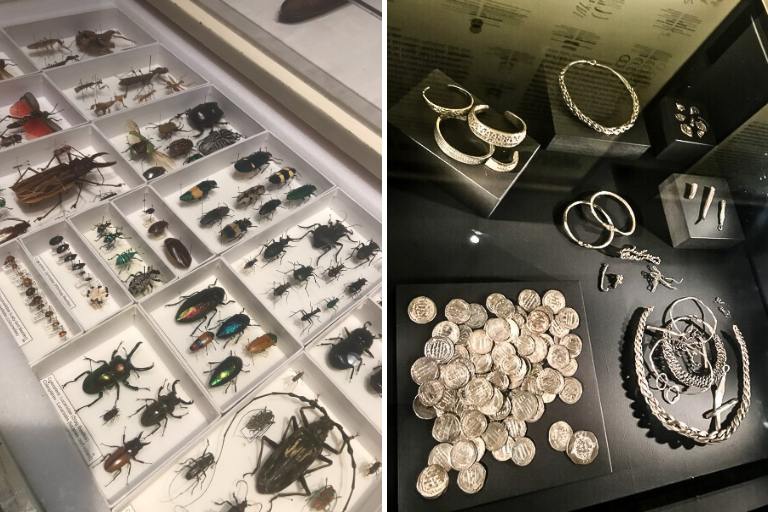
Don’t miss the impressive displays of shark jaws and other marine specimens. The collection also includes exhibits on the Great Lakes ecosystem, showcasing the unique wildlife and geology of this massive freshwater system that defines much of Canada’s southern border.
Gallery of Modern Art and Fine Art
Art lovers will appreciate the ROM’s collection of fine art from various periods and cultural traditions. From European paintings to contemporary Canadian works, these galleries offer a diverse visual experience that complements the museum’s cultural and natural history exhibits.
Special exhibitions
The Royal Ontario Museum regularly hosts special exhibits that bring unique collections from around the world. I’ve seen the Vikings, the spiders and the pearls exhibits, just to name a few. These rotating exhibits ensure there’s always something new to discover, even for frequent visitors.
Research and conservation
Beyond its public exhibitions, the Royal Ontario Museum is a major research center. The museum employs field biologists and other scientists who study everything from dinosaur evolution to modern ecosystems. These researchers contribute to our understanding of natural history and cultural heritage. The ROM’s scientists conduct fieldwork across Canada and around the world, bringing back specimens and knowledge that enhance the museum’s collections and their understanding.
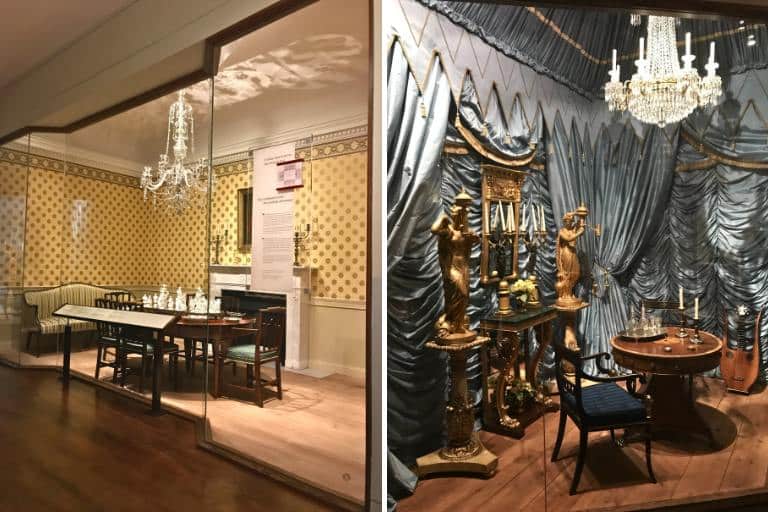
Visitor information
- The Royal Ontario Museum spans six levels and is filled with fascinating exhibits. If this is your first trip, plan to spend at least 3-4 hours exploring, though you could easily spend a full day here.
- Before visiting, check the ROM’s website for current special exhibits and events. If you’re in Toronto for a few days, consider the Toronto Pass, which includes the general admission. Remember that special exhibitions may require an additional fee.
- The Royal Ontario Museum offers excellent accessibility features, dining options, and a gift shop where you can find unique souvenirs. Guided tours provide deeper insights into the collections for those who want to learn more.
Final thoughts on visiting the Royal Ontario Museum
The Royal Ontario Museum stands as a treasure in Toronto’s cultural landscape. With its mix of history, art, and science, the ROM offers something for every visitor. Whether you’re a local like me or just passing through, this world-class institution deserves a spot on your must-visit list.

